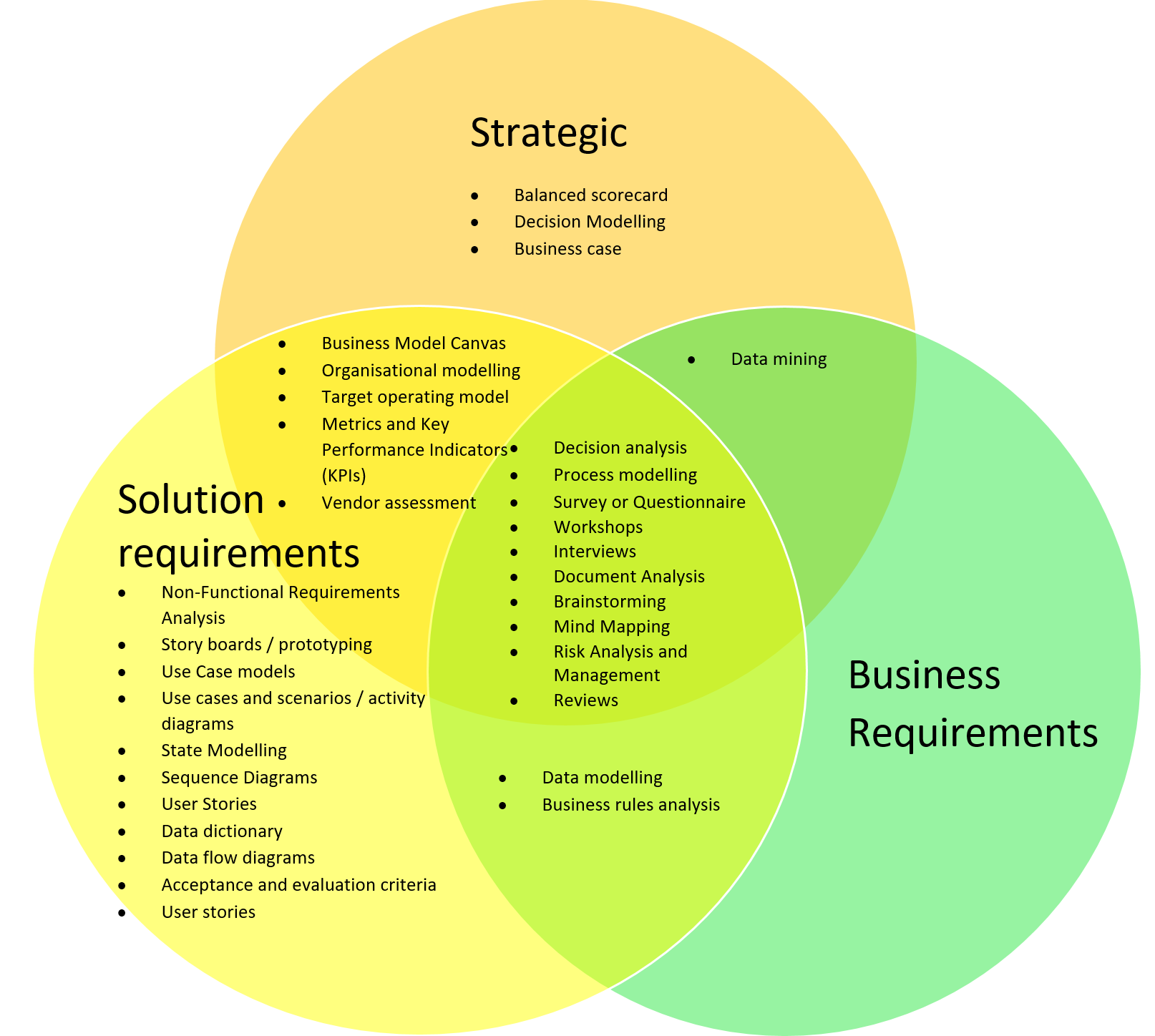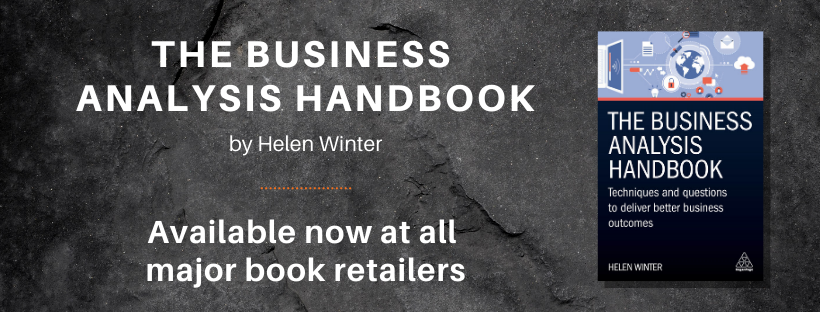
Using business analysis techniques have the following benefits:
- Techniques can be applied with no/little reliance on business knowledge as it provides a structure to follow and provides guidance on the questions to be asked.
- Cross transferable across companies and industries.
- Usually internationally recognised standardised formats and notation.
- Saves time as same technique can be re-used each time without having to recreate a new way of working each time.
- Provides a structure of what information is required so less likely to be gaps
- Acts as a communication tool
- Created from previous lessons learnt to form best practice
Below are some examples of some common techniques and how using them can help at different requirement stages.

The following are links to articles that cover some of the most popular techniques:
- Business case
- Metrics and key performance indicators (KPIs)
- Vendor assessment
- Process modelling
- Workshops
- Mind Mapping
- Data modelling
- Storyboards / Prototyping
- Non-Functional Requirements Analysis
- Use Case models
- Use cases and scenarios / activity diagrams
If you have found this article useful then you might like my book – The Business Analysis Handbook – Techniques and Questions for better Business Outcomes. The book is available from www.koganpage.com and all major print and e-book retailers.

